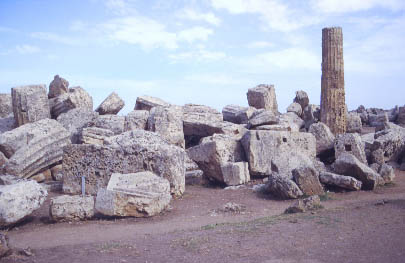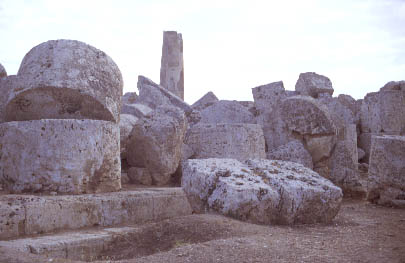


 |
|||||||
|
|
|||||||
 |
Temple G, the most northern temple of Selinus, is probably dedicated to Apollo or Zeus; octastyle in form, it ranks second in size (110 x 50 m) after the Olympieion at Agrigento among Sicilian temples. Its columnar arrangement (8 x 17) is matched only by the Parthenon. It was laid out before the end of the 6th century and left incomplete in 480 B.C. One column alone remains standing. The columns, over 16 m high with a base of 3.4 m, were built up of drums, each weighing about 100 tons, from the quarries at Cuse. As each drum was placed in position it was caused to revolve around a | ||||||
| central pivot, until, by the attrition of sand inserted for the pupose, it rested absolutely truly on the drum beneath. The fact that the columns are unfluted implies that the temple was never completed. The cella, preceded by a pronaos of four columns, had three aisles, the central aisle being open to the sky. At one end are huge blocks from the quarries; the fallen capitals give some idea of the colossal scale of the building. The enourmous stylobate is in itself a marvel of monumental construction. |  |
||||||
|
|
|||||||